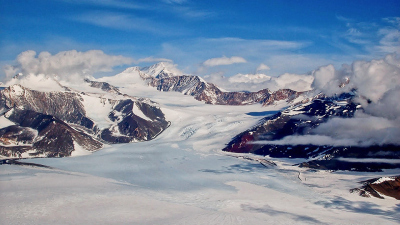- Home
- Discover
- Archive News
- News 2019
- Effects of melt
Effects of melt from the Greenland and Antarctic ice sheets
The collaboration, led by Associate Professor Nick Golledge from Victoria University of Wellington’s Antarctic Research Centre (New Zealand) and involving scientists from MARUM – Center for Marine Environmental Sciences at the University of Bremen as well as Canada, the UK and the US, used climate models to simulate what might happen when water from melting ice sheets enters Earth’s oceans.
The model predictions of Golledge and his colleagues show that in some areas of the world these ocean changes will lead to more extreme weather events and greater year-to-year variation in temperatures.
"For the first time, high-resolution modeling of the Greenland and Antarctic ice sheets has been combined with detailed satellite-based observations of ice mass change to provide a reliable assessment of the effects that future melt-water will exert on the climate", says Jorge Bernales from MARUM. He developed a method to compute the melting and freezing rates at the base of the Antarctic ice shelves that can realistically capture the influence of the ocean forcing on the ice sheets.
The study also found that in the North Atlantic Ocean the influx of meltwater will lead to significant weakening of deep Atlantic circulation, which affects coastal ocean currents such as the Gulf Stream. This will lead to warmer air temperatures in Central America, Eastern Canada, and the high Arctic, but reduced warming over north-western Europe on the other side of the Atlantic.
Contact:
Dr. Jorge Bernales
Email:[Bitte aktivieren Sie Javascript]
Phone: 0421 218 65434
Nicholas R. Golledge, Elizabeth D. Keller, Natalya Gomez, Kaitlin A. Naughten, Jorge Bernales, Luke D. Trusel & Tamsin L. Edwards: Global environmental consequences of twenty-first-century ice-sheet melt, Nature 2019, DOI: 10.1038/s41586-019-0889-9
More information on the study
More information on the project MAGIC-DML



